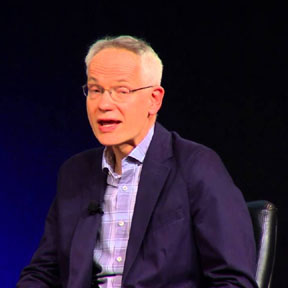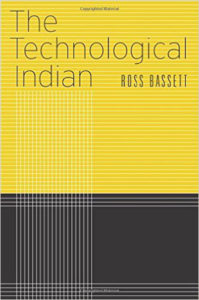
At the present time, when a huge debate is going on in the academic communities of the world over the contributions of ancient Indians to science and technology and when Indians are also excelling among the world’s leaders in these fields, an American science historian, Ross Bassett analyses the careers of 850 Indians who earned engineering degrees from Massachusetts Institute of Technology (MIT) between 1880 and 2000, and looks at their rise to the peak of high-tech professions and their enormous contributions to the modern India’s technological world.
The world should remember that in the late 1800s and 1900s, Indians were left behind by the Industrial Revolution and were not part of mechanical race due to many foreign invaders and rulers who pushed Indians into dark history. But, in fact, India had attracted once the whole world towards it on account of its magnificence, brilliance, renowned university education, medicine, philosophy, spices, silk, precious metals and stones.
In the 20th century, when the very idea of a hi-tech India seemed unbelievable, the groundwork was actually laid to make the dream a reality by the Indian scientists who recently sent an indigenously built space probe to orbit Mars and Indian engineers are leading the top global technology firms, educational institutions, and space research organizations in the world.
Prof. Ross Bassett’s, ‘The Technological Indian’ is a timely book, which illuminates with facts India’s current image with technology and start-ups like Tata Consulting Services (TCS), Datamatics, Patni Computer Systems, Infosys that not only do business with foreign countries but also have even caught the attention of the world.
Prof. Bassett is an associate professor of history at North Carolina State University and is also the director of the Benjamin Franklin Scholars Program which allows engineering students to simultaneously pursue a degree in humanities or social sciences. Even though he specializes in technological history, in this book he does not delve into the history of ancient India and the discoveries made by Indians in science and math, medical technology and aviation. Instead, his book mentions the rise of India in the technological sphere in modern times and offers fresh and interesting perspective to the readers. This book is a description of a history of Indians who went to MIT.

Prof. Bassett’s thesis is that the Indian Institutes of Technology (IITs) are modelled after the MIT and that led to the rise of the current class of technological Indians and the seeds of it were sown during the freedom struggle. In the chapter, “The Indian Discovery of America,” he finds out some writings about MIT in Mahratta, a Pune-based newspaper published by nationalist Bal Gangadhar Tilak, in 1884 that encouraged young Indians to learn technology opposed to just studying liberal arts and law, and preferred higher studies at UK’s Cambridge and Oxford. Prof. Bassett mentions some quotes from Mahratta and Kesari to show how Indians realized to grow and expand enterprise was required in India and learning technicalities was a must.
The Mahratta stood behind the fundamental necessity of Indian engagement with the industrialized world and passionate about the need for India’s industrialization.In his introduction Prof. Bassett mentioned that Shri. M. M. Kunte, the headmaster of the Poona High school, addressed a group of middle-class Hindus for “the art of mechanization.” Thus deliberately began the determination of some Indians who came to US for studying engineering at MIT.
Some stayed back in the US, some went back to India. Enterprises were started in Indiaby the early MIT graduates; among themsome succeeded and some failed, but their journey towards engineering, technology and enterprise continued with ups and downs. Technological development was happening as the freedom struggle was continuing with leaders with law degrees dominating it. Despite, Gandhi’s proposition for developing ruralindustry, many of his associated either went to MIT themselves or sent family members to MIT.
The chapter on “American-made Swadeshi” points out that in the early 1900s, Indians went to a variety of counties for technical study: Japan, Britain, Germany and the United States. Prof. Bassett says, it seemed, in the first part of the twentieth century, the United States and India were unlikely partners for technical interactions as the mass movement seeking Swaraj for India was on upswing.
A group of Gandhi’s young followers were one step on the road to MIT as Shri. Devchand Parekh’s dream of sending Indians to MIT was not dead and wanted to move toward the types of institutions that were compatible with a global, large-scale industrial society. Slowly, asIndustries were set up in India, families started sending their sons to MIT for further studies and the bond between the two got strengthened.
The author profiles major Indian business houses, how they started, their rise and their relationship with MIT while capturing important information about business history. He has also profiled some enterprise failures, especially in the early days. Though prof. Bassett has tried to place events and individuals in historical context, at times the profile and individual histories tend to be in depth and uninteresting to the reader.
The book is a perfect read for someone who has interest in today’s technological world and tries to understand it in historical perspective in general and the role of technological education that made today’s Indians to stand among the world’s leaders in engineering and technology in particular. Indians, who were once perceived as not mechanical oriented but philosophical in nature, have come a long way of 150 years to be titled as “the technological Indian” in the today’s world.
At present, Indian students are part of every global technological enterprise. In India too, the engineering institutes and the IT industries are contributing to large-scale employment. As India and Indians are progressing technologically, the disintegration of joint/extended families and disappearance of rural industries are taking place enormously and the Indian society is facing new socio-economic and familial challenges. The call today is that we need more of social and behavioral sciences and liberal arts universities and research centers with excellent and cutting-edge approaches to find out appropriate solutions to the problems.
This book is not ideological in nature but very descriptive in approach of historical facts and has not followed a particular type of method in explaining its central thesis. The book consists of 10 chapters that describe the different aspects of technological journey of Indians without an introductory or concluding paragraph that connects to previous chapter with the following chapter.
Every chapter starts as a standalone segment of the journey without connections. This book is first of its kind that provides a detailed account of how a group of Indians sought a way forward for their country and saw a future in technology. Although the MIT-educated Indian engineer became an integral part of a global technology and capitalism but failed to focus on India and its problems.
It seems a technological Indian is created at the expense of a technological India. I personally recommend that it is a must-read especially by today’s Indian youngsters not only to know the rise of technological India from modern times but also to know the need to build its infrastructures in every aspects of life.
The South Asian price of this book is 1,250 rupees. Online Kindle Edition is available at 745.75 rupees and hard cover for 785 rupees.
Geetha Patil






